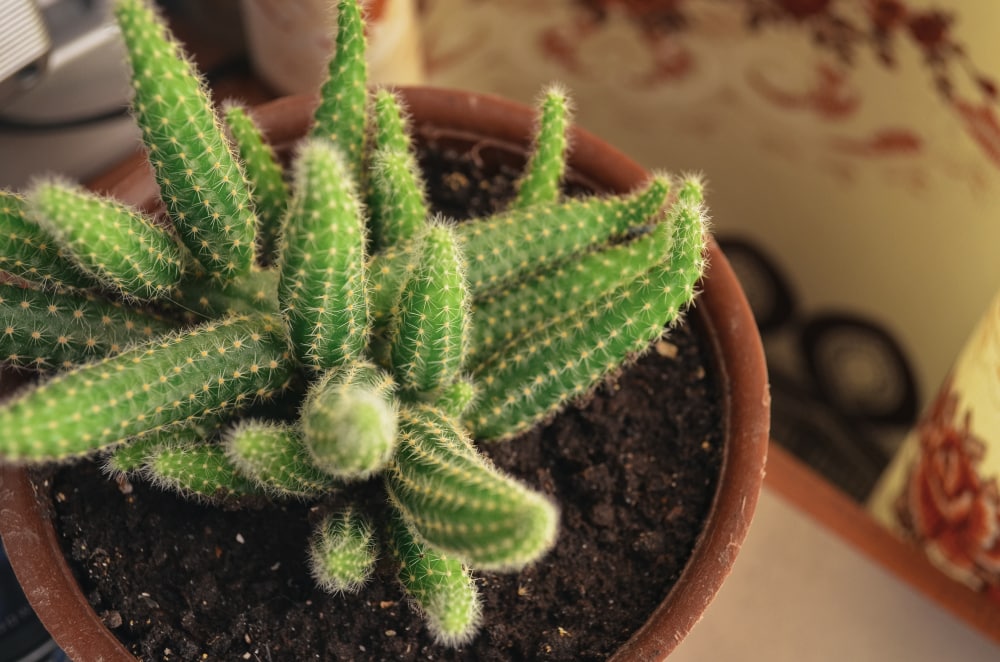
If you don’t manage the plant requirements efficiently then you will start running into many issues with the garden. Most of the time, you can clearly notice the change in the health of the plant. Luckily, the symptoms help gardeners identify the cause of the issue so that they can take necessary action to get around the problem. So, if you’re in a similar situation and don’t know how to revive the plant, then seek help from professionals.
Many gardeners have recently been asking about why their peanut cactus is turning red. If you’re also struggling with a similar situation, then here are a few reasons why your Peanut Cactus might be turning red.
Why Is My Peanut Cactus Turning Red?
1. Regulate Temperature
Even though the peanut cactus is quite resilient, a sudden change in the temperature can leave a lasting impact on the health of your plant. So, if your plant starts turning red after a change in temperature, then you will need to manage the environmental conditions of the peanut cactus. This issue usually happens when users with their peanut cactus indoors decide to put the plant on the porch.
Even though this might seem like a good decision when the season cycle is starting, you will have to deal with plenty of issues if you don’t acclimate the plant. So, make sure to start slow with a minimal increase in the sunlight exposure and then work your way up slowly. That way, your plant will have adequate time to get used to the new conditions.
Similarly, you should also focus on the position of the plant and make sure that there are sufficient nutrients in the soil. This method will maximize your chances of restoring the health of the plant back to its original shape. So, just acclimate the cactus slowly and use proper nutrient support.
2. Extended Exposure
Now, most people believe that extensive exposure to sunlight for most cacti is beneficial. This leads to gardeners putting their peanut cactus in direct sunlight without any shade. So, if you’re in a similar situation and can’t get rid of the red color of the cacti, then you will have to relocate the plant or find a better location.
According to many experts, keeping the sunlight exposure within the eight-hour limit is a good option for most gardeners. So, if you’re new to farming and don’t know much about the cactus, then limiting sunlight exposure is your best option. On the other hand, you can also relocate the plant to another spot.
All in all, you won’t have to bother with extended exposure to sunlight if you’ve kept the cactus in a shaded region. So, make sure to find a spot that is safe from all the direct sunlight. That way, the cactus won’t have to deal with the red color of the cactus. Hopefully, this information helps you better manage the color of your peanut cactus. For more information, try asking local experts.
3. Insufficient Water Supply
It is true that the cactus doesn’t need much water to survive, but if you completely ignore the water requirements for an extended period of time, then the cactus can start turning red. If you’re in a similar situation and haven’t managed the watering schedule, then that is likely why your peanut cactus is turning red. Luckily, this issue can easily be fixed by increasing the water supply by a little margin.
With that said, you will also have to check the potting mixture to increase the retention of water. That way, the peanut cactus will benefit greatly from even the smallest quantities of water. So, if your peanut cactus is turning red, then make sure to increase the water supply, and the issue will be fixed in due time.
All in all, these were a few reasons why your peanut cactus might be turning red. Most often than not, you will be dealing with sun exposure issues. So, if your cactus is out in the direct sunlight, then make sure to relocate the plant indoors. That way, you will limit the sun exposure to a few hours, and the plant should start to recover. However, if you’re unable to revive the unit, then seek help from local experts.
